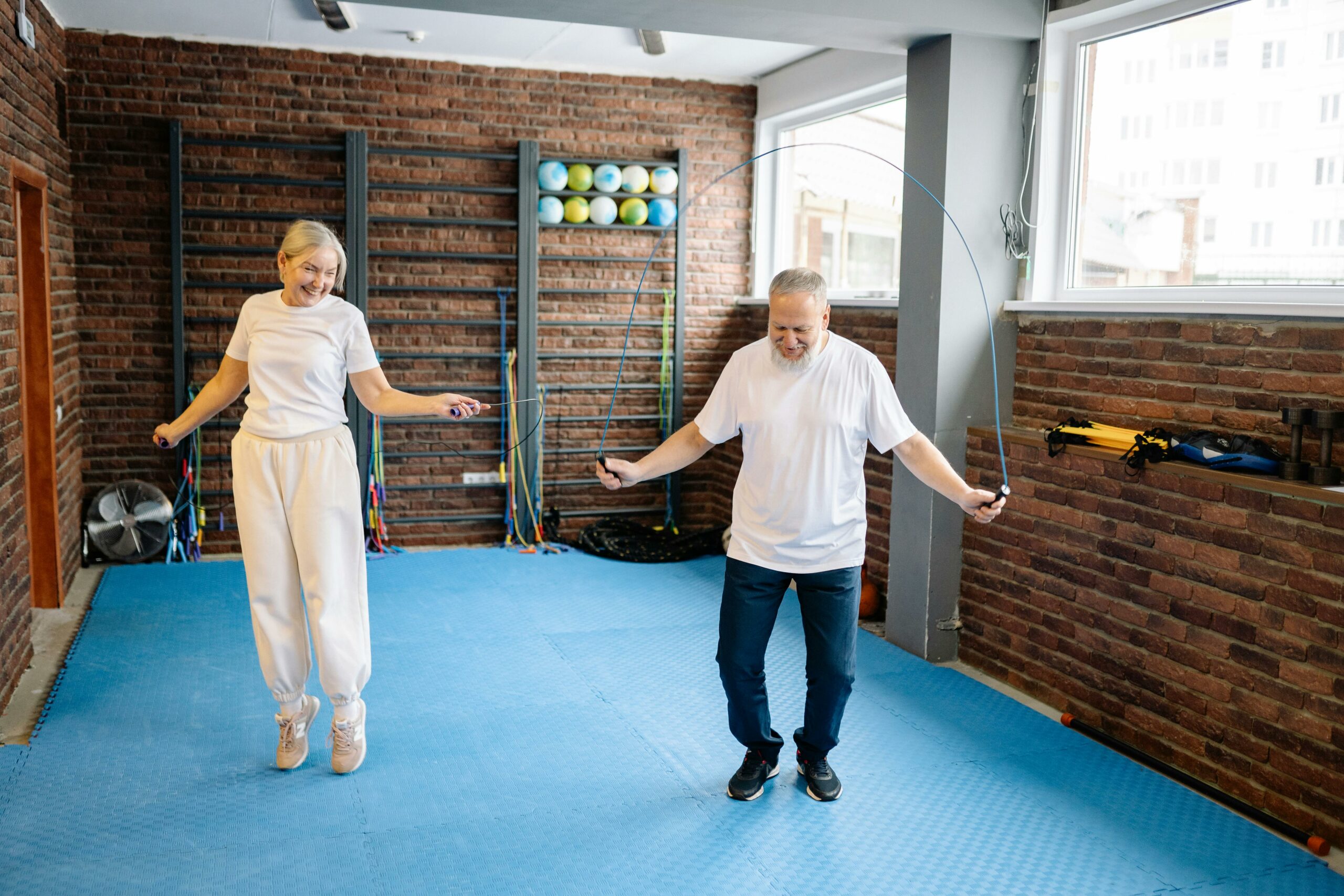
By Amy Hinds
Community is an innate need. At a primal level, community provides protection and survival, but in today’s world, most seek community with others to fulfill a need for belonging and understanding. Shared experiences and commonalities lead to deep connections which most humans actively seek out from an early age. Throughout history, we have constructed and built environments to support and encourage community, enabling humans to prosper. People don’t want to simply exist; from cradle to grave we want to thrive.
In the quest to create enriching and supportive environments, the role of interior design cannot be overstated. Good interior design goes beyond mere aesthetics; it plays a pivotal role in shaping the daily experiences and fostering a sense of community. Due to the great breadth of interior environments, interior designers can specialize in a variety of classifications. No matter the intended use: elementary school, restaurant, professional office, or private residence, a main component of every design should be to establish a connection for those people who will live or work within the space.
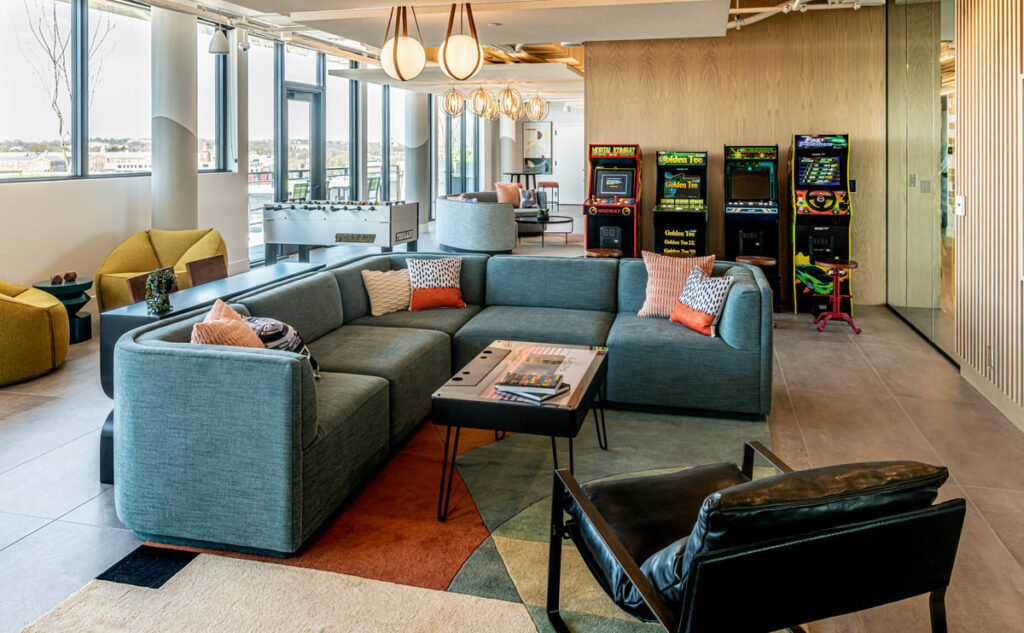
The 202 at Washington Gateway
A sector of Interior Design that is experiencing tremendous growth is senior living. The US population is aging. In the past 10 years, the age group 65+ experienced the most growth, increasing a full 4%, while other age groups stayed relatively the same. There is a greater need to develop housing to fulfill the physical and social needs of this targeted age group. More than ever, there is more physical distance between families. It is not uncommon for seniors to live farther away from their adult children, making the need for senior living communities extremely important. In senior living communities, thoughtful design can bridge gaps, create opportunities for interaction, and ultimately enhance the quality of life.
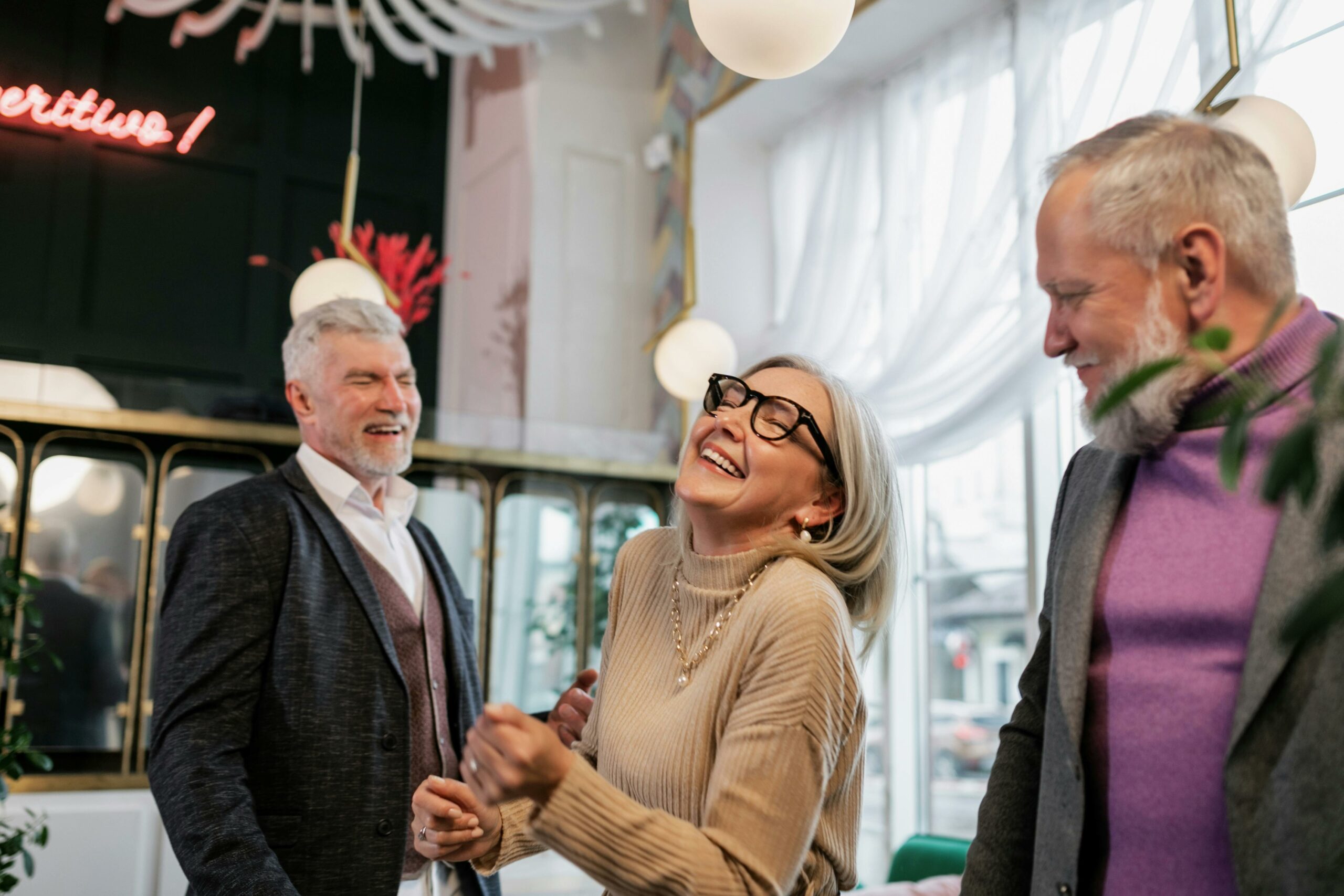
At the core of any thriving senior living community are the common areas—spaces where residents come together to socialize, engage in activities, and build relationships. Effective interior design makes these areas inviting and functional, encouraging residents to gather and connect.
For areas such as communal lounges, dining areas, and activity rooms, providing open, flexible designs with comfortable seating arrangements facilitate conversation and interaction. Incorporating elements like warm lighting, vibrant colors, and cozy textures can make these spaces feel homey and welcoming. These spaces will not only draw people in but will create natural opportunities for residents to mingle and form connections.
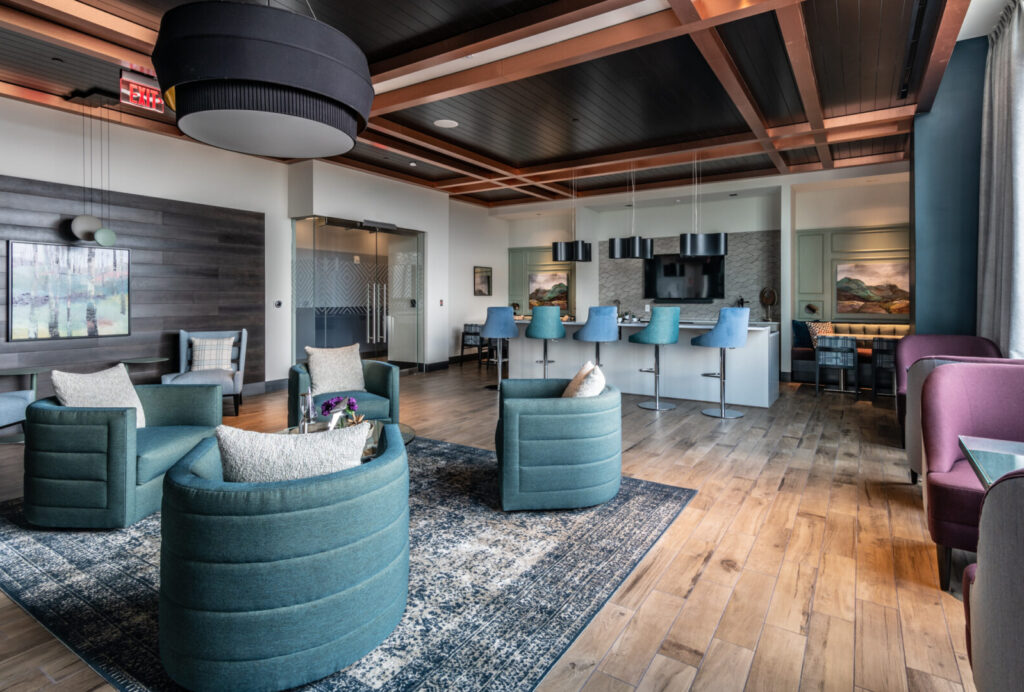
The Denizen at Alexandria, VA
While common areas are crucial, personal spaces also play a significant role in fostering community. Thoughtful interior design in private apartments can help residents feel more at ease and open to inviting others into their inner sanctum. Designing customizable features, easy-to-navigate layouts, and ample storage, provides residents a sense of ownership and comfort in their homes. Everyone wants a personal space to feel proud of and that reflects one’s personality and priorities. When residents feel comfortable in their personal spaces, they are more likely to invite others in and engage in communal activities, further strengthening community bonds.
For a community to thrive it must be inclusive. In senior living communities, this means that the interiors must be accessible and functional for everyone. Incorporating features like wheelchair-friendly pathways, adjustable lighting, and clear signage are just a few ways to ensure the space can be used by all. Design should also consider sensory needs—using contrasting colors for better visibility and incorporating acoustical treatments to manage noise levels can greatly enhance the overall experience. When everyone can easily navigate and enjoy communal spaces, it fosters a sense of belonging and inclusion, which is crucial for building a strong community.

Additionally, creating spaces that support diverse activities—such as group exercise classes, movie nights, or educational workshops—can cater to various interests and encourage residents to explore new hobbies and meet new people. By designing environments that accommodate a range of activities, senior living communities can foster dynamic interactions and deepen relationships among residents while also providing the opportunity for mental and physical stability and growth.
Ultimately, good interior design in senior living communities is about creating an environment where residents feel valued and connected, where all residents can continue to thrive. This means designing spaces that reflect the community’s values, history, and culture. When residents feel that their environment reflects who they are and what they value, it fosters a deeper connection. This sense of belonging is crucial for the health and well-being of the residents.
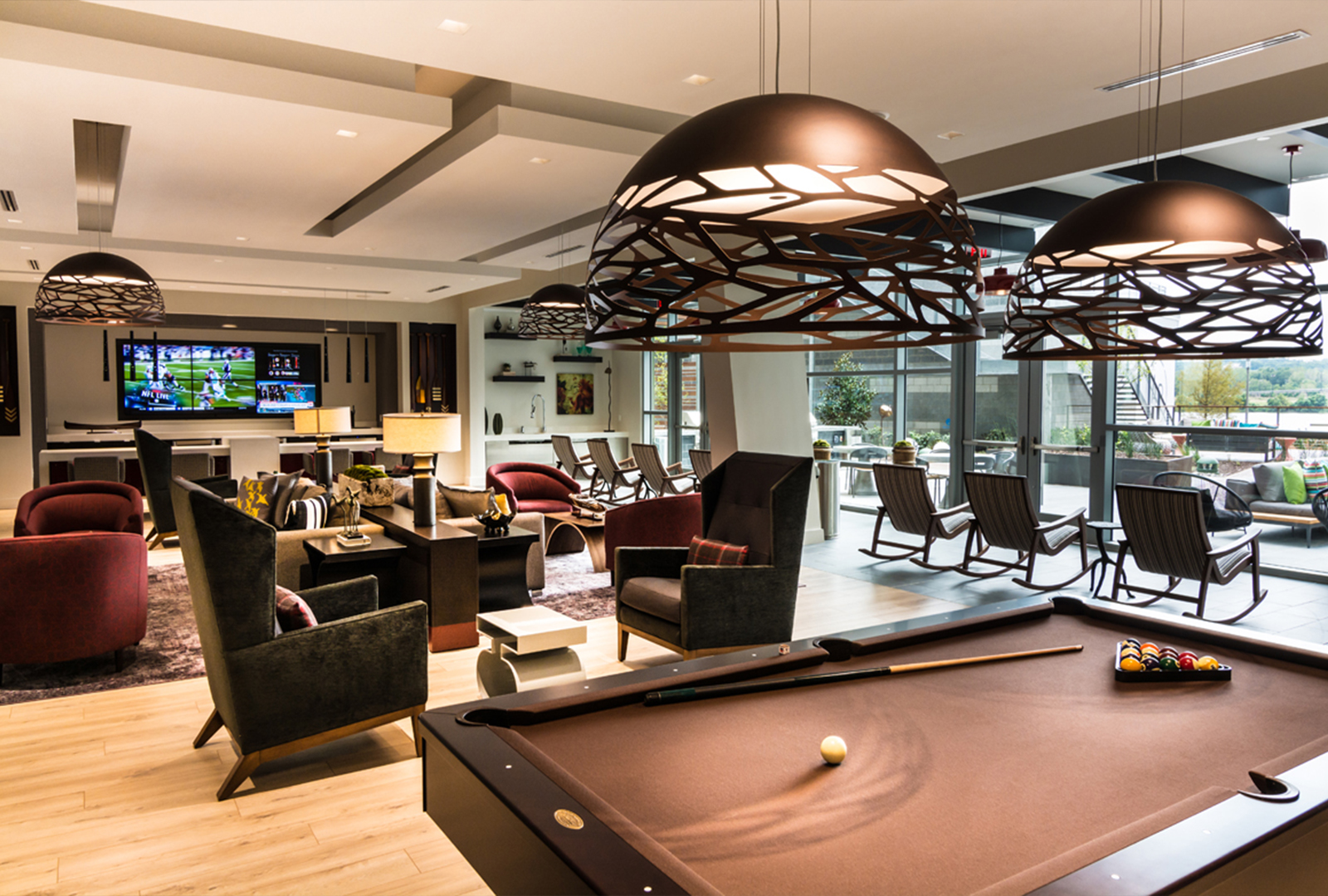
Dock 79 at Washington, DC
In senior living communities, interior design is more than just creating beautiful spaces; it’s about crafting environments that nurture connection, support inclusivity, and enhance the overall quality of life. Ultimately, the goal of interior design in senior living is to create an environment where every resident feels valued, connected, and engaged. When done right, good design doesn’t just enhance the physical space—it enriches the community itself, making it a true home for all who live there.
Amy Hinds is the Design Manager of SR/A.
